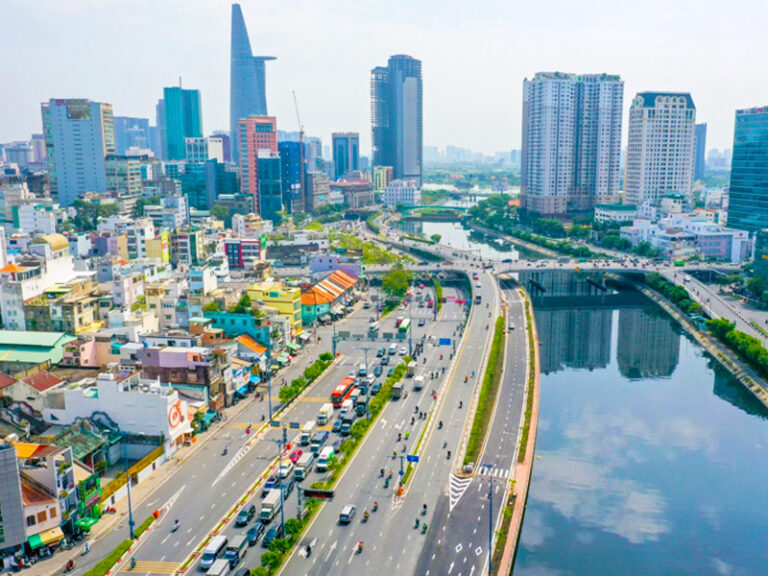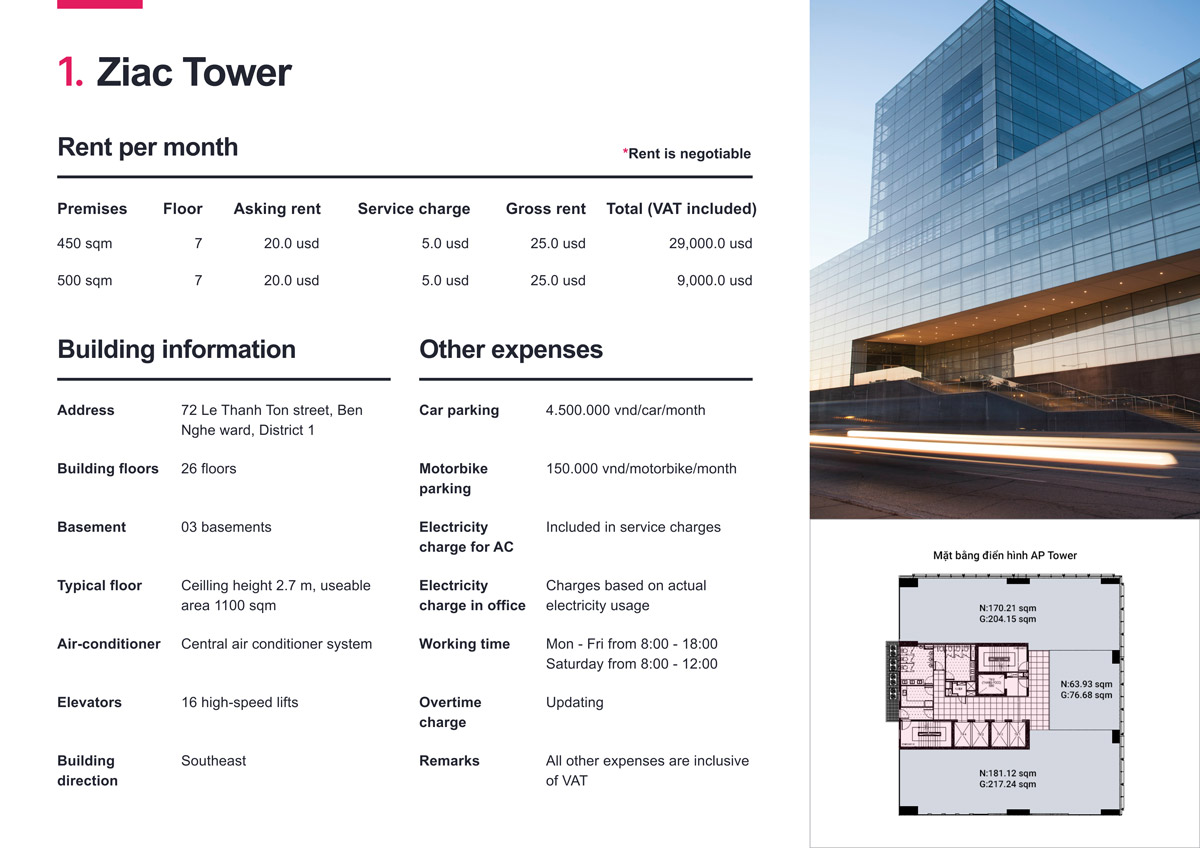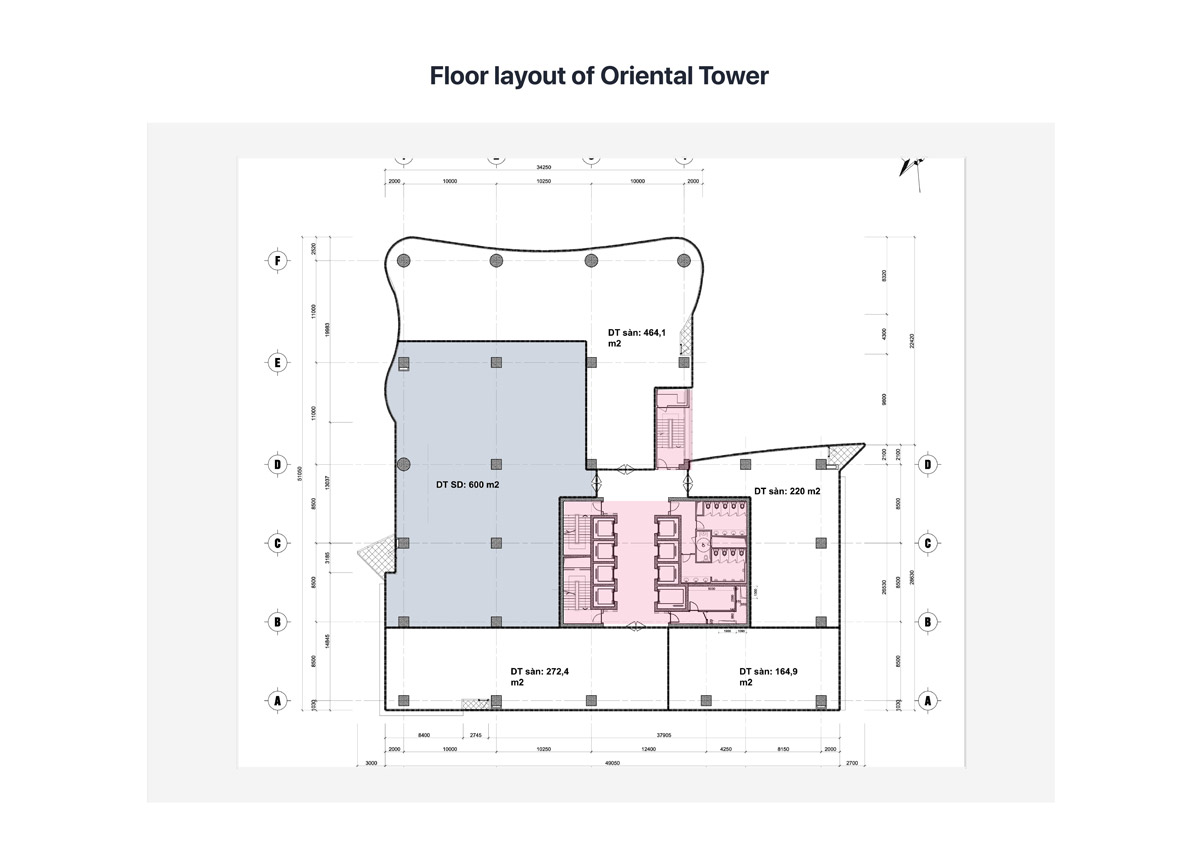List of Cities and Towns in Vietnam: Area and Population
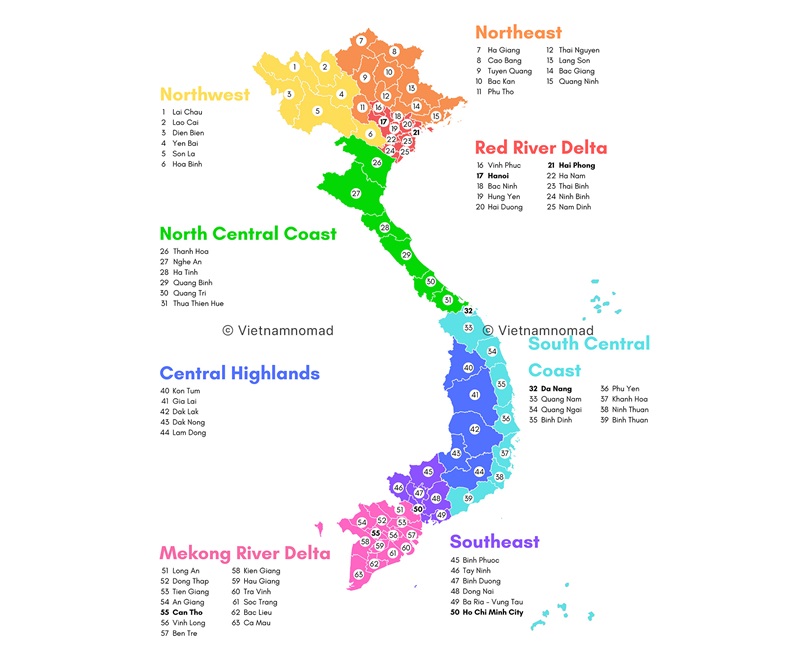
Cities have always played a crucial role as the economic, political and cultural hubs of each nation. In Vietnam, the system of cities is continuously evolving, significantly contributing to the country’s modernization and development. So, how many cities are there in Vietnam today? In this article, Maison Office will provide a comprehensive overview of the cities in Vietnam, categorized by different administrative levels.
Table of Contents
1. How many cities does Vietnam have today?
According to the latest 2024 statistics from the list of administrative units of the General Statistics Office, Vietnam currently has 88 cities, including: 5 centrally run cities: Hanoi, Ho Chi Minh City, Hai Phong, Hue, Can Tho. Poem; 1 city under the central government is Thu Duc and 82 cities under 58 provinces.
2. List of 82 cities under the provinces of Vietnam
Provincially governed cities are administrative units equivalent to districts, towns, counties, falling under the direct management of the provincial People’s Committee. These cities often serve as the administrative, economic, cultural centers of a province, in many cases, they also hold a central role for an entire region. So, how many provincially governed cities are there in Vietnam today?
According to statistics by 2023, Vietnam has 82 provincial cities. Below is a list of Vietnamese cities directly under the province with detailed information about the area, population, urban type, etc. of each city:
LIST OF 82 PROVINCIAL CITIES IN VIETNAM
| No | City | Province | Area (km²) | Population (people) | Density (people/km²) | Number of wards and communes | Urban type |
| 1 | Ba Ria
2012 |
Ba Ria – Vung Tau | 91,46 | 122.045 | 1.334 | 8 wards, 3 communes | II
2014 |
| 2 | Bac Lieu
2010 |
Bac Lieu | 213,80 | 158.264 | 740 | 7 wards, 3 communes | II
2014 |
| 3 | Bao Loc
2010 |
Lam Dong | 232,56 | 158.981 | 684 | 6 wards, 5 communes | III
2009 |
| 4 | Bac Giang
2005 |
Bac Giang | 66,77 | 250.989 | 3.759 | 10 wards, 6 communes | II
2014 |
| 5 | Bac Kan
2015 |
Bac Kan | 137,00 | 45.036 | 329 | 6 wards, 2 communes | III
2012 |
| 6 | Bac Ninh
2006 |
Bac Ninh | 82,64 | 270.426 | 3.272 | 19 wards, 0 commune | I
2017 |
| 7 | Ben Tre
2009 |
Ben Tre | 70,60 | 124.560 | 1.764 | 8 wards, 6 commune | II
2019 |
| 8 | Bien Hoa
1976 |
Dong Nai | 264,08 | 1.055.414 | 3.997 | 29 wards, 1 communes | I
2015 |
| 9 | Buon Ma Thuot
1995 |
Dak Lak | 377,18 | 375.590 | 996 | 13 wards, 8 communes | I
2010 |
| 10 | Cam Ranh
2010 |
Khanh Hoa | 316,00 | 138.510 | 438 | 9 wards, 6 communes | III
2009 |
| 11 | Cao Bang
2012 |
Cao Bang | 107,12 | 73.549 | 687 | 8 wards, 3 communes | III
2010 |
| 12 | Cao Lanh
2007 |
Dong Thap | 107,00 | 213.945 | 1.999 | 8 wards, 7 communes | II
2020 |
| 13 | Ca Mau
1999 |
Ca Mau | 249,23 | 226.372 | 908 | 10 wards, 7 communes | II
2010 |
| 14 | Cam Pha
2012 |
Quang Ninh | 386,50 | 190.232 | 492 | 13 wards, 3 communes | II
2015 |
| 15 | Chau Doc
2013 |
An Giang | 105,23 | 160.765 | 1.524 | 5 wards, 2 communes | II
2015 |
| 16 | Chi Linh
2019 |
Hai Duong | 282,91 | 220.421 | 779 | 14 wards, 5 communes | III
2015 |
| 17 | Di An
2020 |
Binh Duong | 60,05 | 463.023 | 7.711 | 7 wards, 0 communes | II
2023 |
| 18 | Da Lat
1893 |
Lam Dong | 394,60 | 231.225 | 586 | 12 wards, 4 communes | I
2009 |
| 19 | Dien Bien Phu
2003 |
Dien Bien | 308,18 | 80.366 | 261 | 7 wards, 5 communes | III
2003 |
| 20 | Dong Ha
2009 |
Quang Tri | 73,06 | 95.658 | 1.309 | 9 wards, 0 communes | III
2005 |
| 21 | Dong Hoi
2004 |
Quang Binh | 155,87 | 133.818 | 859 | 9 wards, 6 communes | II
2014 |
| 22 | Dong Xoai
2018 |
Binh Phuoc | 167,32 | 108.595 | 649 | 6 wards, 2 communes | III
2014 |
| 23 | Gia Nghia
2019 |
Dak Nong | 284,11 | 63.046 | 222 | 6 wards, 2 communes | III
2015 |
| 24 | Hai Duong
1997 |
Hai Duong | 111,64 | 508.190 | 4.552 | 19 wards, 6 communes | I
2019 |
| 25 | Ha Giang
2010 |
Ha Giang | 133,46 | 55.559 | 416 | 5 wards, 3 communes | III
2009 |
| 26 | Ha Tien
2018 |
Kien Giang | 107,92 | 48.644 | 451 | 5 wards, 2 communes | III
2012 |
| 27 | Ha Tinh
2007 |
Ha Tinh Bac Trung Bo | 56,54 | 202.062 | 3.574 | 10 wards, 5 communes | II
2019 |
| 28 | Ha Long
1993 |
Quang Ninh | 1.119,12 | 300.268 | 268 | 21 wards, 12 communes | I
2013 |
| 29 | Hoa Binh
2006 |
Hoa Binh | 348,65 | 135.718 | 389 | 12 wards, 7 communes | III
2005 |
| 30 | Hoi An
2008 |
Quang Nam | 61,48 | 98.599 | 1.604 | 9 wards, 4 communes | III
2006 |
| 31 | Hong Ngu
2020 |
Dong Thap | 121,84 | 100.610 | 826 | 5 wards, 2 communes | III
2018 |
| 32 | Hue
1929 |
Thua Thien Hue | 265,99 | 652.572 | 2.453 | 29 wards, 7 communes | I
2005 |
| 33 | Hung Yen
2009 |
Hung Yen | 73,89 | 118.646 | 1.606 | 7 wards, 10 communes | III
2007 |
| 34 | Kon Tum
2009 |
Kon Tum | 432,98 | 168.264 | 389 | 10 wards, 11 communes | III
2005 |
| 35 | Lai Chau
2013 |
Lai Chau | 92,37 | 42.973 | 465 | 5 wards, 2 communes | III
2013 |
| 36 | Lao Cai
2004 |
Lao Cai | 282,13 | 130.671 | 463 | 10 wards, 7 communes | II
2014 |
| 37 | Lang Son
2002 |
Lang Son | 77,94 | 103.284 | 1.325 | 5 wards, 3 communes | II
2019 |
| 38 | Long Khanh
2019 |
Dong Nai | 191,75 | 171.276 | 893 | 11 wards, 4 communes | III
2015 |
| 39 | Long Xuyen
1999 |
An Giang | 115,36 | 272.365 | 2.361 | 11 wards, 2 communes | I
2020 |
| 40 | Mong Cai
2008 |
Quang Ninh | 519,58 | 108.553 | 209 | 8 wards, 9 communes | II
2018 |
| 41 | My Tho
1967 |
Tien Giang | 81,54 | 228.109 | 2.798 | 11 wards, 6 communes | I
2016 |
| 42 | Nam Dinh
1921 |
Nam Dinh | 46,40 | 236.294 | 5.093 | 22 wards, 3 communes | I
2011 |
| 43 | Nga Bay
2020 |
Hau Giang | 78,07 | 101.192 | 1.296 | 4 wards, 2 communes | III
2015 |
| 44 | Nha Trang
1977 |
Khanh Hoa | 251,00 | 422.601 | 1.684 | 19 wards, 8 communes | I
2009 |
| 45 | Ninh Binh
2007 |
Ninh Binh | 48,36 | 128.680 | 2.657 | 11 wards, 3 communes | II
2014 |
| 46 | Phan Rang – Thap Cham
2007 |
Ninh Thuan | 79,19 | 167.394 | 2.114 | 15 wards, 1 commune | II
2015 |
| 47 | Phan Thiet
1999 |
Binh Thuan | 210,90 | 226.736 | 1.075 | 14 wards, 4 communes | II
2009 |
| 48 | Pho Yen
2022 |
Thai Nguyen | 258,42 | 231.363 | 895 | 13 wards, 5 communes | III
2019 |
| 49 | Phu Quoc
2020 |
Kien Giang | 589,23 | 146.028 | 248 | 2 wards, 7 communes | II
2014 |
| 50 | Phuc Yen
2018 |
Vinh Phuc | 120,13 | 155.575 | 1.295 | 8 wards, 2 communes | III
2013 |
| 51 | Phu Ly
2008 |
Ha Nam | 87,64 | 158.212 | 1.805 | 11 wards, 10 communes | II
2018 |
| 52 | Pleiku
1999 |
Gia Lai | 260,77 | 254.802 | 977 | 14 wards, 8 communes | I
2020 |
| 53 | Quang Ngai
2005 |
Quang Ngai | 160,15 | 261.417 | 1.632 | 9 wards, 14 communes | II
2015 |
| 54 | Quy Nhon
1986 |
Binh Dinh | 286,00 | 690.053 | 2.413 | 21 wards, 5 communes | I
2010 |
| 55 | Rach Gia
2005 |
Kien Giang | 105,86 | 228.416 | 2.158 | 11 wards, 1 commune | II
2014 |
| 56 | Sa Dec
2013 |
Dong Thap | 59,81 | 106.198 | 1.776 | 6 wards, 3 communes | II
2018 |
| 57 | Sam Son
2017 |
Thanh Hoa | 44,94 | 109.208 | 2.430 | 8 wards, 3 communes | III
2012 |
| 58 | Soc Trang
2007 |
Soc Trang | 76,15 | 203.056 | 2.667 | 10 wards, 0 communes | II
2022 |
| 59 | Song Cong
2015 |
Thai Nguyen | 98,37 | 69.382 | 705 | 7 wards, 3 communes | III
2010 |
| 60 | Son La
2008 |
Son La | 323,51 | 106.052 | 328 | 7 wards, 5 communes | II
2019 |
| 61 | Tam Diep
2015 |
Ninh Binh | 104,98 | 62.866 | 599 | 6 wards, 3 communes | III
2012 |
| 62 | Tam Ky
2006 |
Quang Nam | 100,26 | 122.374 | 1.221 | 9 wards, 4 communes | II
2016 |
| 63 | Tan An
2009 |
Long An | 81,94 | 145.120 | 1.771 | 9 wards, 5 communes | II
2019 |
| 64 | Tan Uyen
2023 |
Binh Duong | 191,76 | 466.053 | 2.430 | 10 wards, 2 communes | III
2018 |
| 65 | Tay Ninh
2013 |
Tay Ninh | 139,92 | 135.254 | 967 | 7 wards, 3 communes | III
2012 |
| 66 | Thanh Hoa
1994 |
Thanh Hoa | 146,77 | 608.910 | 4.148 | 30 wards, 4 communes | I
2014 |
| 67 | Thai Binh
2004 |
Thai Binh | 67,71 | 206.037 | 3.043 | 10 wards, 9 communes | II
2013 |
| 68 | Thai Nguyen
1962 |
Thai Nguyen | 222,93 | 340.403 | 1.527 | 21 wards, 11 communes | I
2010 |
| 69 | Thu Dau Mot
2012 |
Binh Duong | 118,91 | 336.705 | 2.832 | 14 wards, 0 communes | I
2017 |
| 70 | Thuan An
2020 |
Binh Duong | 83,71 | 618.984 | 7.394 | 9 wards, 1 commune | III
2017 |
| 71 | Tra Vinh
2010 |
Tra Vinh | 68,03 | 112.584 | 1.655 | 9 wards, 1 commune | II
2016 |
| 72 | Tuyen Quang
2010 |
Tuyen Quang | 184,38 | 232.230 | 1.260 | 10 wards, 5 communes | II
2021 |
| 73 | Tuy Hoa
2005 |
Phu Yen | 106,82 | 155.921 | 1.460 | 12 wards, 4 communes | II
2013 |
| 74 | Tu Son
2021 |
Bac Ninh | 61,08 | 202.874 | 3.321 | 12 wards, 0 communes | III
2018 |
| 75 | Uong Bi
2011 |
Quang Ninh | 256,30 | 120.982 | 472 | 9 wards, 1 commune | II
2013 |
| 76 | Viet Tri
1962 |
Phu Tho | 111,75 | 315.850 | 2.826 | 13 wards, 9 communes | I
2012 |
| 77 | Vinh
1963 |
Nghe An | 105,00 | 339.114 | 3.230 | 16 wards, 9 communes | I
2008 |
| 78 | Vi Thanh
2010 |
Hau Giang | 118,86 | 72.686 | 612 | 5 wards, 4 communes | II
2019 |
| 79 | Vinh Long
2009 |
Vinh Long | 47,82 | 200.120 | 4.185 | 11 wards, 0 communes | II
2020 |
| 80 | Vinh Yen
2006 |
Vinh Phuc | 50,80 | 114.908 | 2.262 | 8 wards, 1 commune | II
2014 |
| 81 | Vung Tau
1991 |
Ba Ria – Vung Tau | 141,10 | 420.860 | 2.983 | 16 wards, 1 commune | I
2013 |
| 82 | Yen Bai
2002 |
Yen Bai | 108,15 | 100.631 | 930 | 9 wards, 6 communes | II
2023 |
In the list of provincial cities in Vietnam, there are 58 cities that are provincial capitals. The two provinces with the most cities currently are Quang Ninh and Binh Duong with 4 cities.
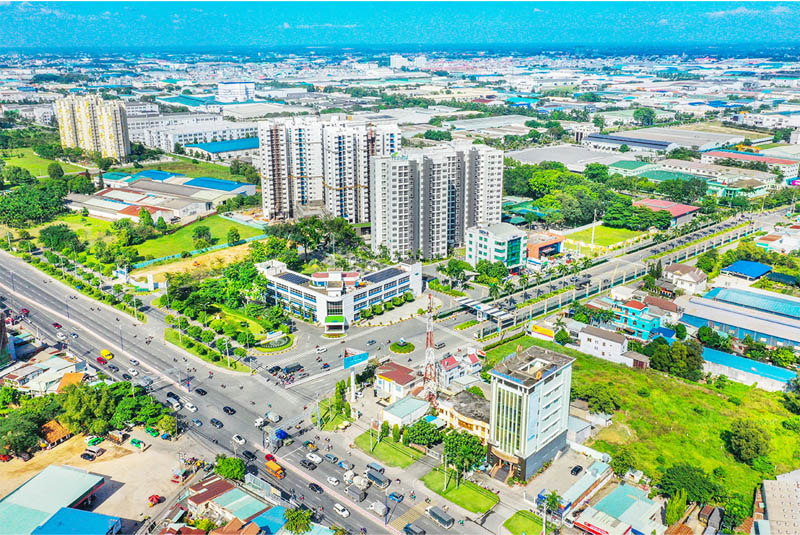
3. Centrally run cities of Vietnam
LIST OF 5 CENTRAL CITIES IN VIETNAM
| No | City | Region | Area (km2) | Population (people) | Density (people/km2) | Administrative units | Urban type |
| 1 | Ha Noi
1976 |
Red river delta | 3.358,90 | 8.053.663 | 2.398 | 12 districts, 17 districts and 1 town | Special |
| 2 | Hai Phong
1976 |
Red river delta | 1.563,70 | 2.028.514 | 1.289 | 7 districts, 6 districts and 2 island districts | I |
| 3 | Da Nang 1997 |
South Central Coast | 1.284,90 | 1.231.000 | 828 | 6 districts and 2 districts | I |
| 4 | HCMC
1976 |
South East | 2.061,04 | 8.992.688 | 4.362 | 16 districts, 5 districts and 1 city | Special |
| 5 | Can Tho
2004 |
Mekong Delta | 1.439,20 | 1.235.171 | 864 | 5 districts and 4 districts | I |
Centrally run cities are often classified as Special urban areas or Class I urban areas. Because these are large cities, have outstandingly developed economies and also play an important political role. political, military, cultural and social aspects of the country.
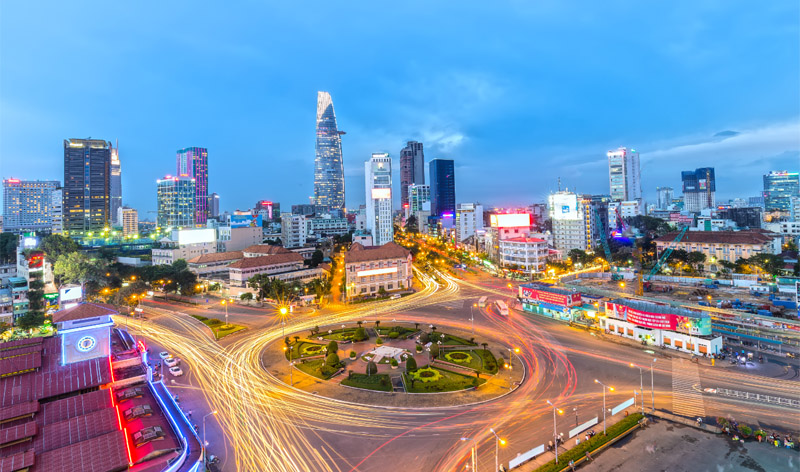
Therefore, centrally run cities are heavily invested in infrastructure and industrial science, creating conditions to promote development in all aspects of the country.
4. City belongs to centrally run city
A city within a centrally governed city is a second-tier administrative unit, equivalent to districts, counties, towns and provincially governed cities. This administrative classification is used to refer to an urban area within a centrally governed city.
In Vietnam, on December 9, 2020, the National Assembly Standing Committee issued Resolution 1111/NQ-UBTVQH14 on the establishment of Thu Duc City under Ho Chi Minh City, effective from January 1, 2021. Accordingly, Thu Duc City was formed by merging the entire area and population of District 2, District 9 and the former Thu Duc District. The city is currently divided into 34 wards.
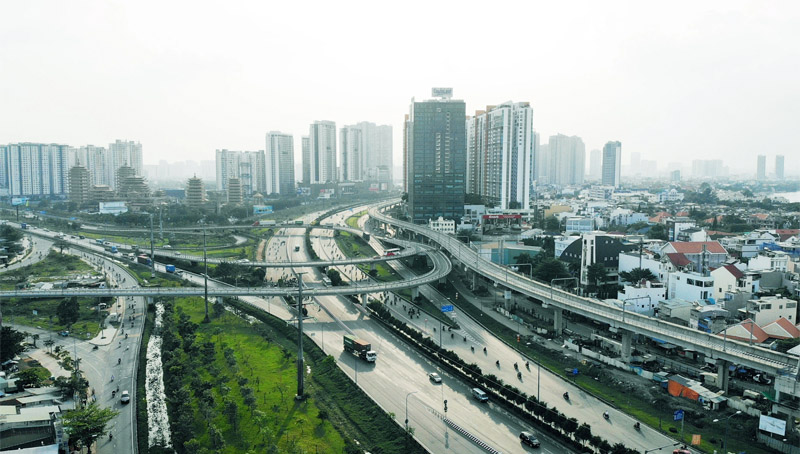
After its establishment, Thu Duc city is the first and only city in Vietnam under the administrative division of a centrally run city. The total area of Thu Duc city is 211.56 km² with a population of about 1,013,795 people.
5. Top 10 largest cities in Vietnam
Vietnam is a country experiencing rapid development. Along with economic growth, cities across the nation are expanding and modernizing at an increasing pace. When ranking the largest cities in Vietnam, we must consider not only land area but also a variety of other factors such as population, economic growth rate, infrastructure, facilities, education and social aspects,…
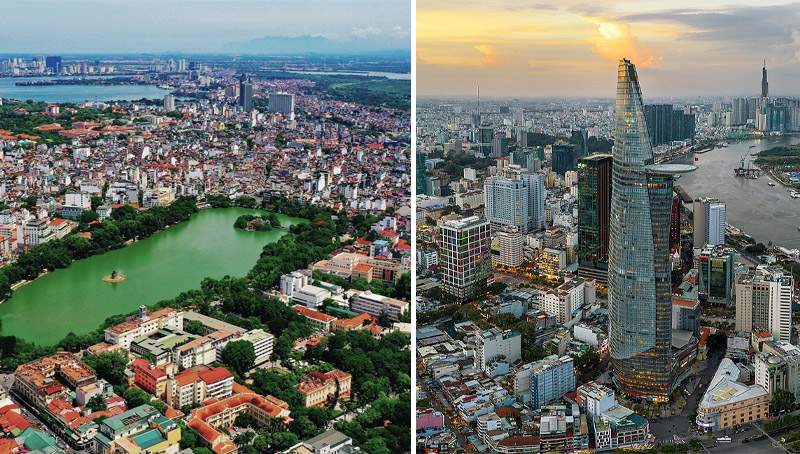
Below is a list of the largest cities in Vietnam as of now:
| Class | City | Area (km2) | Population (people) | Density (people/km2) |
| #1 | Ha Noi | 3.358,90 | 8.053.663 | 2.398 |
| #2 | Ho Chi Minh City | 2.061,04 | 8.992.688 | 4.362 |
| #3 | Hai Phong | 1.563,70 | 2.028.514 | 1.289 |
| #4 | Can Tho | 1.439,20 | 1.235.171 | 864 |
| #5 | Da Nang | 1.284,90 | 1.231.000 | 828 |
| #6 | Bien Hoa | 264,08 | 1.055.414 | 3.997 |
| #7 | Thu Duc | 211,56 | 1.013.795 | 4.792 |
| #8 | Hai Duong | 111,64 | 508.190 | 4.552 |
| #9 | Hue | 265,99 | 652.572 | 2.453 |
| #10 | Thuan An | 83,71 | 618.984 | 7.394 |
6. Frequently asked questions
6.1. Which city is the capital of Vietnam?
The capital of Vietnam is Hanoi, a centrally governed city located in the northern region of the country. Hanoi serves as the nation’s primary political, administrative, cultural, educational, scientific, technological center. Additionally, it preserves unique historical and cultural values that are deeply connected to the country’s millennia-long history of nation-building and defense.
6.2. Which Vietnamese city has the largest population?
As of December 31, 2023, Vietnam’s population is estimated at 99,186,471 people. The most populous city in Vietnam is Ho Chi Minh City, with over 9.17 million residents, accounting for approximately 9.3% of the national population. Following closely is Hanoi, with an estimated population of 8.33 million, representing 8.46% of the total population. Ho Chi Minh City and Hanoi are the two most populous cities, significantly outpacing other provinces and cities across Vietnam.
6.3. Which city in Vietnam has the largest area?
Currently, Hanoi is the largest city in Vietnam by area, covering a total of 3,359.82 km², which accounts for approximately 1.01% of the country’s total area. It is also the city with the second-largest population and population density in the nation, following only Ho Chi Minh City.
6.4. Which province has the most cities today?
Vietnam currently has 63 provinces and centrally run cities. Which includes:
- 2 provinces have 4 affiliated cities;
- 3 provinces have 3 affiliated cities;
- 12 provinces have 2 affiliated cities;
- 41 provinces have 1 affiliated city.
Thus, currently there are two provinces with the most cities in Vietnam: Binh Duong and Quang Ninh. In there:
- Quang Ninh has 4 cities: Mong Cai, Ha Long, Uong Bi, Cam Pha.
- Binh Duong has 4 cities: Di An, Thuan An, Thu Dau Mot, Tan Uyen.
With the information summarized above, you now have a clear understanding of how many cities there are in Vietnam. The development of cities plays a crucial role in the country’s industrialization and modernization process. Therefore, it is essential to implement comprehensive solutions to ensure the sustainable growth of cities and improve the quality of life for residents.



